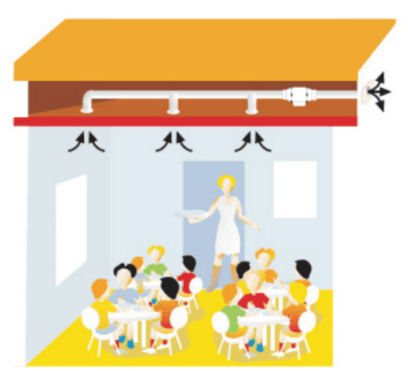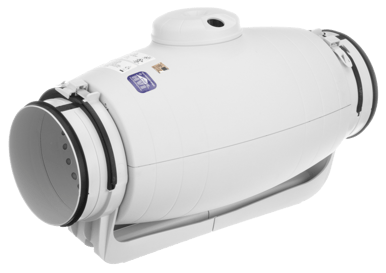Today more than ever, we must focus on correct ventilation in classrooms and cafeterias, not only to stop the spread of viruses like flu, COVID-19, and respiratory syncytial virus (RSV) but also to obtain ideal air quality and temperature for students. The quality of the environment that we breathe in an educational building is related to the academic performance, concentration, and comfort of the students.
Poor indoor air quality (IAQ) has been shown to have a negative effect on the attention span of school-age children, causing a noticeable drop in concentration. Mechanical ventilation is the most effective way to provide fresh, filtered air in classrooms.

Managing comfort and air quality levels in educational centers can be challenging and costly, which is why some facilities turn to natural ventilation as their main strategy for improving IAQ. However, this can become a problem in the colder months when cold air flows into the building from outside, putting a lot of pressure on the school’s heating system and causing energy and costs to rise.
Another concern with natural ventilation is that it allows in unconditioned outside air; it gives you very little control over the flow of air entering the building. This is where mechanical ventilation comes in; it provides schools with much greater control over the temperature and quality of the air flowing into classrooms, increasing the comfort and well-being of the students and staff.
Our Project
Schools in Yauco and Penelas, Puerto Rico
PRODUCTS INSTALLED:
- TD-125XS - TD-SILENT In-line Mixed Flow Duct Fan

The S&P TD-MIXVENT and TD-SILENT series of inline duct fans have been specially designed to maximize the airflow performance with minimal noise levels within the smallest and most compact of housing sizes. This makes the TD-MIXVENT and TD-SILENT fans the ultimate solution for small to medium-sized ventilation installations that require a high airflow to pressure ratio and occupy only the minimum space possible (like false ceiling voids, cabinets, and many other limited space environments).
A CLOSER LOOK: TD SILENT
As the name suggests, these TD fans are extremely quiet, low-profile “Mixed-flow” fans. Manufactured in plastic material with an external connection box, the body is easily dismantled with a full-speed controllable, single-speed motor. Sound waves are directed through the perforated inner skin and absorbed by a layer of sound-absorbent insulation. Plus, the TD-SILENT is fitted with rubber gaskets on the inlet and outlet to absorb vibrations.
TD-SILENT’s compact design and low noise level make it the ideal solution for removing contaminated air from school rooms.
CONCLUSION
By using TD-SILENT In-line Mixed Flow Duct Fans, S&P USA’s Export team was able to provide a ventilation solution that kept students, teachers, and staff healthy. Additionally, the TD-Silent’s extremely quiet, low-profile design made no disruption to classroom learning.

